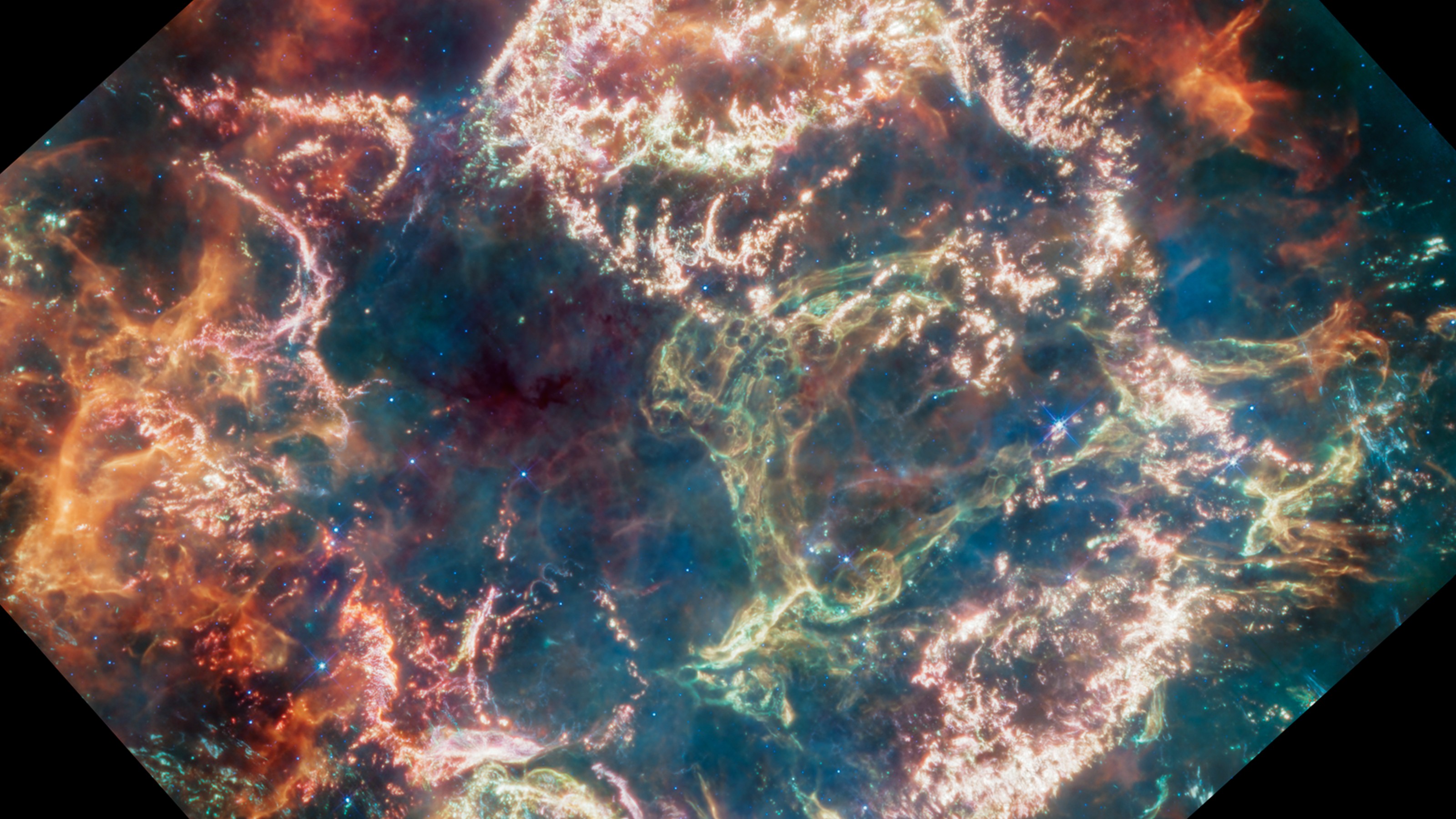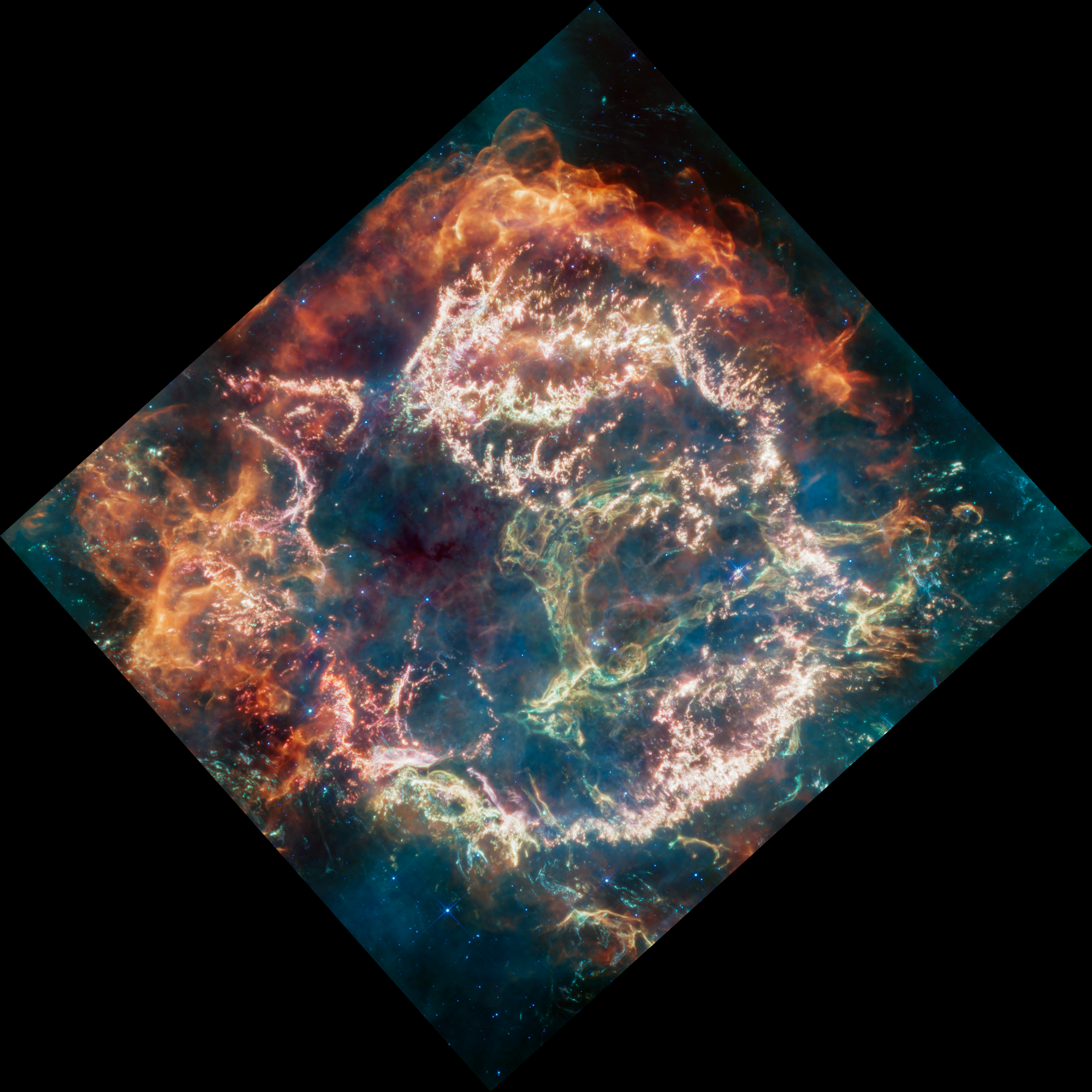
Astronomers have captured the sharpest image yet of the debris field of the Milky Way's most recent known supernova.
Cassiopeia A, the remnants of a stellar explosion that appeared in Earth’s skies 340 years ago, sits 11,000 light-years away in the constellation Cassiopeia. A new image from the James Webb Space Telescope reveals the leftovers of the supernova in brilliant green, pink and orange, with each color representing a different wavelength of infrared light that would actually be invisible to the human eye. Scientists are using the images to dissect what happened to the ill-fated star before it died.
"Cas A represents our best opportunity to look at the debris field of an exploded star and run a kind of stellar autopsy to understand what type of star was there beforehand and how that star exploded," Danny Milisavljevic, an assistant professor of physics and astronomy at Purdue University in Indiana and the principal investigator of the Webb program that captured the observations, said in a statement.
Related: 25 jaw-dropping James Webb Space Telescope Images

The first X-rays from Cassiopeia A were discovered in the 1960s, but light from the supernova would have reached Earth in the late 1600s. There are no confirmed written observations of the supernova, which might have looked like a particularly bright star, though historians debate whether certain observers, such as English astronomer John Flamsteed, might have noticed it.
The new images are in the infrared wavelengths, which are longer than those of visible light. Orange and red in the adjusted images represent warm dust, which is pushing outward into the surrounding interstellar dust and gas in a bubble-like shape. Bright pink filaments within this bubble represent stellar debris, including argon, neon, oxygen and more dust.
"Compared to previous infrared images, we see incredible detail that we haven't been able to access before," Tea Temim, an astronomer at Princeton University and a co-investigator on the program, said in the statement.
Most strikingly, researchers see a prominent green filament winding its way through the central cavity of the bubble. They don't yet fully understand the structure.
"We've nicknamed it the Green Monster in honor of Fenway Park in Boston," Milisavljevic said. (Fenway Park’s large green left-field wall bears the same nickname). "If you look closely, you'll notice that it's pockmarked with what look like mini-bubbles. The shape and complexity are unexpected and challenging to understand."
By understanding Cassiopeia A, astronomers hope to figure out where the universe's dust comes from. Even ancient galaxies far back in the history of the universe are dusty. Astronomers know that supernovas are one source of ample dust, but they haven't been able to fully trace the origin of all the dust observed in the early universe.
"By understanding the process of exploding stars, we're reading our own origin story," Milisavljevic said. "I'm going to spend the rest of my career trying to understand what's in this data set."







